
Hades, in the ancient Greek religion and mythology, is the god of the dead and the king of the underworld, with which his name became synonymous. Hades was the eldest son of Cronus and Rhea, although this also made him the last son to be regurgitated by his father. He and his brothers, Zeus and Poseidon, defeated their father's generation of gods, the Titans, and claimed joint rulership over the cosmos. Hades received the underworld, Zeus the sky, and Poseidon the sea, with the solid earth available to all three concurrently. In artistic depictions, Hades is typically portrayed holding a bident and wearing his helm with Cerberus, the three-headed guard-dog of the underworld, standing at his side.

Mystery religions, mystery cults, sacred mysteries or simply mysteries, were religious schools of the Greco-Roman world for which participation was reserved to initiates (mystai). The main characterization of this religion is the secrecy associated with the particulars of the initiation and the ritual practice, which may not be revealed to outsiders. The most famous mysteries of Greco-Roman antiquity were the Eleusinian Mysteries, which predated the Greek Dark Ages. The mystery schools flourished in Late Antiquity; Julian the Apostate in the mid 4th century is known to have been initiated into three distinct mystery schools—most notably the mithraists. Due to the secret nature of the school, and because the mystery religions of Late Antiquity were persecuted by the Christian Roman Empire from the 4th century, the details of these religious practices are derived from descriptions, imagery and cross-cultural studies. Much information on the Mysteries comes from Marcus Terentius Varro.

The Eleusinian Mysteries were initiations held every year for the cult of Demeter and Persephone based at the Panhellenic Sanctuary of Eleusis in ancient Greece. They are considered the "most famous of the secret religious rites of ancient Greece". Their basis was an old agrarian cult, and there is some evidence that they were derived from the religious practices of the Mycenean period. The Mysteries represented the myth of the abduction of Persephone from her mother Demeter by the king of the underworld Hades, in a cycle with three phases: the descent (loss), the search, and the ascent, with the main theme being the ascent of Persephone and the reunion with her mother. It was a major festival during the Hellenic era, and later spread to Rome. Similar religious rites appear in the agricultural societies of the Near East and in Minoan Crete.
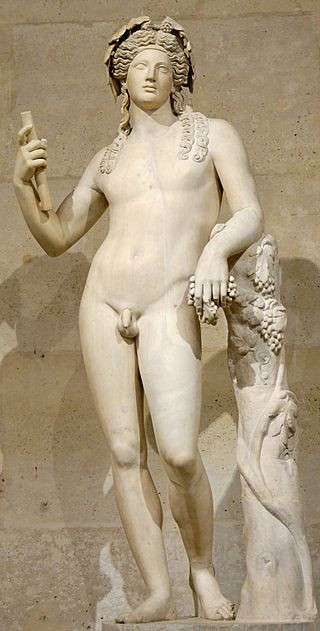
In ancient Greek religion and myth, Dionysus is the god of wine-making, orchards and fruit, vegetation, fertility, festivity, insanity, ritual madness, religious ecstasy, and theatre. He was also known as Bacchus by the Greeks for a frenzy he is said to induce called baccheia. As Dionysus Eleutherius, his wine, music, and ecstatic dance free his followers from self-conscious fear and care, and subvert the oppressive restraints of the powerful. His thyrsus, a fennel-stem sceptre, sometimes wound with ivy and dripping with honey, is both a beneficent wand and a weapon used to destroy those who oppose his cult and the freedoms he represents. Those who partake of his mysteries are believed to become possessed and empowered by the god himself.
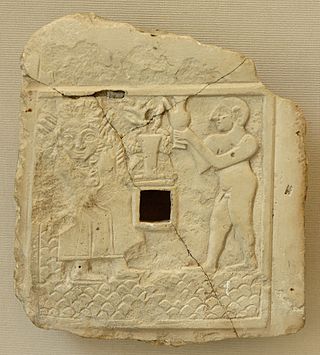
A libation is a ritual pouring of a liquid, or grains such as rice, as an offering to a deity or spirit, or in memory of the dead. It was common in many religions of antiquity and continues to be offered in cultures today.

In the material culture of classical antiquity, a patera or phiale is a shallow ceramic or metal libation bowl. It often has a bulbous indentation in the center underside to facilitate holding it, in which case it is sometimes called a mesomphalic phiale. It typically has no handles, and no feet.

Religious practices in ancient Greece encompassed a collection of beliefs, rituals, and mythology, in the form of both popular public religion and cult practices. The application of the modern concept of "religion" to ancient cultures has been questioned as anachronistic. The ancient Greeks did not have a word for 'religion' in the modern sense. Likewise, no Greek writer known to us classifies either the gods or the cult practices into separate 'religions'. Instead, for example, Herodotus speaks of the Hellenes as having "common shrines of the gods and sacrifices, and the same kinds of customs."

The word chthonic, or chthonian, is derived from the Ancient Greek word χθών, "khthon", meaning earth or soil. It translates more directly from χθόνιος or "in, under, or beneath the earth" which can be differentiated from Γῆ, or "ge", which speaks to the living surface of land on the earth. In Greek, chthonic is a descriptive word for things relating to the underworld and can be used in the context of chthonic gods, chthonic rituals, chthonic cults, and more. This is as compared to the more commonly referred-to Olympic gods and their associated rites and cults. Olympic gods are understood to reference that which exists above the earth, particularly in the sky. Gods that are related to agriculture are also considered to have chthonic associations as planting and growing take place in part under the earth.
Thargelia was one of the chief Athenian festivals in honour of the Delian Apollo and Artemis, held on their birthdays, the 6th and 7th of the month Thargelion.
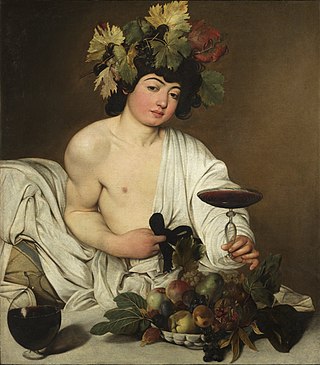
The Dionysian Mysteries were a ritual of ancient Greece and Rome which sometimes used intoxicants and other trance-inducing techniques to remove inhibitions and social constraints, liberating the individual to return to a natural state. It also provided some liberation for men and women marginalized by Greek society, among which were slaves, outlaws, and non-citizens. In their final phase the Mysteries shifted their emphasis from a chthonic, underworld orientation to a transcendental, mystical one, with Dionysus changing his nature accordingly. By its nature as a mystery religion reserved for the initiated, many aspects of the Dionysian cult remain unknown and were lost with the decline of Greco-Roman polytheism; modern knowledge is derived from descriptions, imagery and cross-cultural studies.

The Thracian religion comprised the mythology, ritual practices and beliefs of the Thracians, a collection of closely related ancient Indo-European peoples who inhabited eastern and southeastern Europe and northwestern Anatolia throughout antiquity and who included the Thracians proper, the Getae, the Dacians, and the Bithynians. The Thracians themselves did not leave an extensive written corpus of their mythology and rituals, but information about their beliefs is nevertheless available through epigraphic and iconographic sources, as well as through ancient Greek writings.

The Samothrace Temple Complex, known as the Sanctuary of the Great Gods, is one of the principal Pan-Hellenic religious sanctuaries, located on the island of Samothrace within the larger Thrace. Built immediately to the west of the ramparts of the city of Samothrace, it was nonetheless independent, as attested to by the dispatch of city ambassadors during festivals.
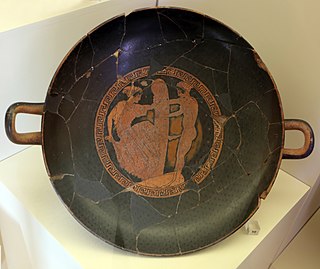
Haloa or Alo (Ἁλῶα) was an Attic festival, celebrated principally at Eleusis, in honour of Demeter, protector of the fruits of the earth, of Dionysus, god of the grape and of wine, and Poseidon, god of the seashore vegetation. In Greek, the word hálōs (ἅλως) from which Haloa derives means “threshing-floor” or “garden.” While the general consensus is that it was a festival related to threshing—the process of loosening the edible part of cereal grain after harvest—some scholars disagree and argue that it was instead a gardening festival. Haloa focuses mainly on the “first fruits” of the harvest, partly as a grateful acknowledgement for the benefits the husbandmen received, partly as prayer that the next harvest would be plentiful. The festival was also called Thalysia or Syncomesteria.

In ancient Greek religion, an orgion was an ecstatic form of worship characteristic of some mystery cults. The orgion is in particular a cult ceremony of Dionysos, celebrated widely in Arcadia, featuring "unrestrained" masked dances by torchlight and animal sacrifice by means of random slashing that evoked the god's own rending and suffering at the hands of the Titans. The orgia that explained the role of the Titans in Dionysos's dismemberment were said to have been composed by Onomacritus. Greek art and literature, as well as some patristic texts, indicate that the orgia involved snake handling.

The Sacred Way, in ancient Greece, was the road from Athens to Eleusis. It was so called because it was the route taken by a procession celebrating the Eleusinian Mysteries. The procession to Eleusis began at the Sacred Gate in the Kerameikos on the 19th Boedromion.
In the Hellenic religion, nephalia was the religious name for libations, in which wine was not offered or the use of wine was explicitly forbidden. Liquids, such as water, milk, honey or oil in any combination, were used with a mixture of honey and water or milk, being one of the most common nēphália offerings. Nephalia were performed as both independent rituals and in conjunction with other sacrifices, such as animal sacrifices. The use of nēphália is documented in the works of Aeschylus and Porphyry.
The term gamelia (Γαμηλία) can refer to several ancient Athenian customs revolving around the act of marriage. Most often it relates to the practice in which a new husband would perform an offering in honor of his recent marriage for his phratry during the Apaturia.
The festival calendar of Classical Athens involved the staging of many festivals each year. This includes festivals held in honor of Athena, Dionysus, Apollo, Artemis, Demeter, Persephone, Hermes, and Herakles. Other Athenian festivals were based around family, citizenship, sacrifice, and women. There were at least 120 festival days each year.
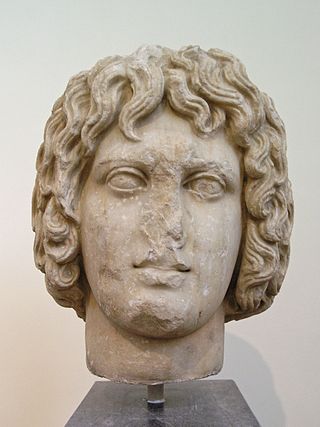
In ancient Greek religion and myth, Eubuleus is a god known primarily from devotional inscriptions for mystery religions. The name appears several times in the corpus of the so-called Orphic gold tablets spelled variously, with forms including Euboulos, Eubouleos and Eubolos. It may be an epithet of the central Orphic god, Dionysus or Zagreus, or of Zeus in an unusual association with the Eleusinian Mysteries. Scholars of the late 20th and early 21st centuries have begun to consider Eubuleus independently as "a major god" of the mysteries, based on his prominence in the inscriptional evidence. His depiction in art as a torchbearer suggests that his role was to lead the way back from the Underworld.

Ancient Greek funerary practices are attested widely in literature, the archaeological record, and in ancient Greek art. Finds associated with burials are an important source for ancient Greek culture, though Greek funerals are not as well documented as those of the ancient Romans.




















